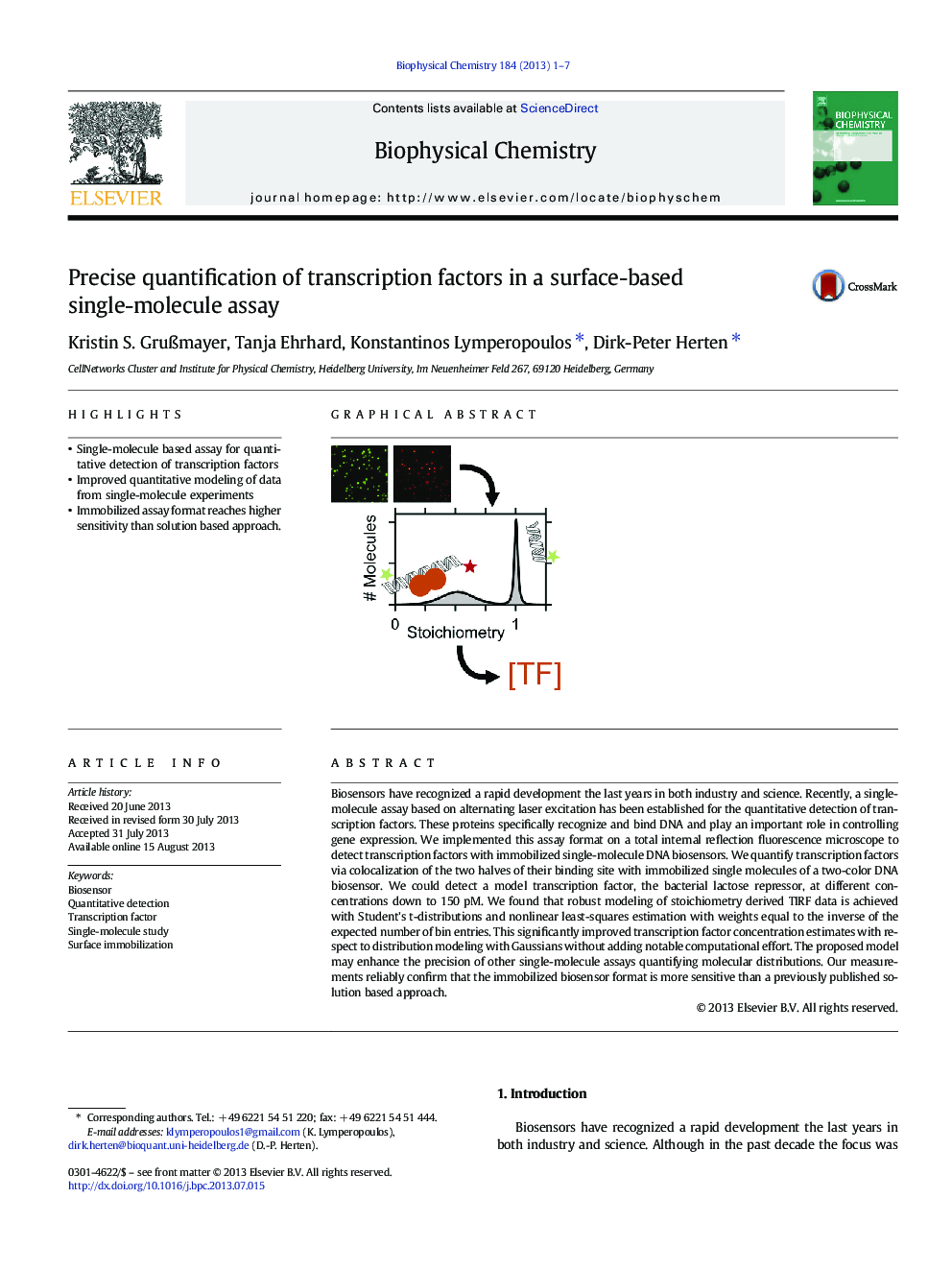| Article ID | Journal | Published Year | Pages | File Type |
|---|---|---|---|---|
| 5370995 | Biophysical Chemistry | 2013 | 7 Pages |
â¢Single-molecule based assay for quantitative detection of transcription factorsâ¢Improved quantitative modeling of data from single-molecule experimentsâ¢Immobilized assay format reaches higher sensitivity than solution based approach.
Biosensors have recognized a rapid development the last years in both industry and science. Recently, a single-molecule assay based on alternating laser excitation has been established for the quantitative detection of transcription factors. These proteins specifically recognize and bind DNA and play an important role in controlling gene expression. We implemented this assay format on a total internal reflection fluorescence microscope to detect transcription factors with immobilized single-molecule DNA biosensors. We quantify transcription factors via colocalization of the two halves of their binding site with immobilized single molecules of a two-color DNA biosensor. We could detect a model transcription factor, the bacterial lactose repressor, at different concentrations down to 150Â pM. We found that robust modeling of stoichiometry derived TIRF data is achieved with Student's t-distributions and nonlinear least-squares estimation with weights equal to the inverse of the expected number of bin entries. This significantly improved transcription factor concentration estimates with respect to distribution modeling with Gaussians without adding notable computational effort. The proposed model may enhance the precision of other single-molecule assays quantifying molecular distributions. Our measurements reliably confirm that the immobilized biosensor format is more sensitive than a previously published solution based approach.
Graphical abstractDownload full-size image
